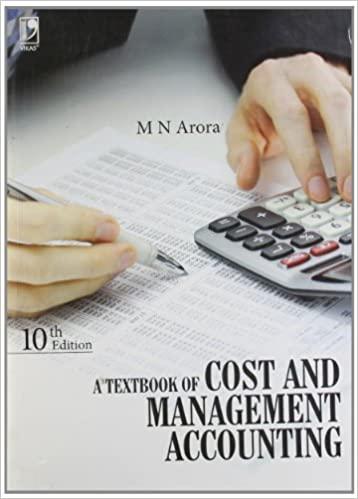You can verity that the NPV at 17 percent is 58.901, and the return on the new survetlance system is only about 16.14 percent. The project does not appear to be profitable. CONCEPTS REVIEW AND CRITICAL THINKING QUESTIONS 1. Opportunity Cost [LO1] In the context of capital budgeting. what is an opportenity cost? 2. Depreciation [I.O1] Given the choice, would a firm prefer to use MACRS depreciation or straight-line depreciation? Why? 3. Net Working Capital [1.01] In our capital bodgeting examples, we assumed that a firm woald recover all of the working capital it invested in a project. Is this a reasonable assumption? When might it not be valid? 4. StandeAlone Principle [L.O] ] Suppose a financial manager is quoted as saying. +Our firmases the stand-alone principle. Bectause we treat projects like minifirms in our evaluation process, we include financing coss because they are relevant at the firm level." Critically evaluate this statement 5. Equivalent Annual Cost [1.04] When is EAC analysts appropriate for comparing two or mare projects? Why is this method used? Are there any implicit assumptions required by this method that you find troubling? Explain. 6. Cash Flow and Depreciation [1.01] "When evaluating projects, we're concerned with only the relevant incremental aftertax cash flows. Therefore, because depreciation is a noncash expense, we should igoore its effects when evaluating projects:-1 Critically evaluste this stalement. 7. Capital Budgeting Considerations [LOI] A major college textbook publisher has an cxisting finance textbook. The publisher is debating whether to prodace an "esentialized" version, meaning a shorter (and lower-priced) book. What are some of the considerations that should come into play? To unswer the next three questions, refer to the following example. In 2003 . Porsche unveilod its new sports utility vehicle (SUV), the Cayenne. With a price tag of over 340.000. the Cayenne went from zero to 62 mph in 9.7 seconds. Porsche's decission to cnter the SUV market was a responve to the runaway sticcess of oeher high-priced SUVssuch as the Mercedes-Benz M-class. Vehicles in this class had generated years of high profits. The Cayenne certainly spiced up the market, and Porsche subsequently introduced the Cayenine Turbo S, which goes from zero to 60mph in 3.8 rcconds and has a (limited?) top speed of 183 mph. The price tag for the Cayenne Turbo S in 2020 ? About $163,250 ! Some analysts questioned Porsche's entry into the luxory SUV market. The anabyes were concermed not only that Porsche was a late entry into the market, but alse that the introduction of the Cayenne would damage. Possche's repetation as a maker of thigh-performance automobiles







